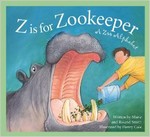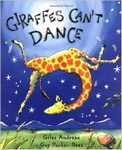Sometimes, when we take on a new cause, hobby, or interest, we have to make compromises to accommodate this new pursuit in our lives. If you want to play the piano, for example, you cannot have long finger nails. If you want to be a long distance runner, you have to work hard to keep keep your body lean and strong. In today's picture book you will meet a young bunny who wants to be a ninja. He has to work incredibly hard to attain his goal, and he makes rather significant changes in his life to do so.
 Ninja Bunny
Ninja Bunny
 Ninja Bunny
Ninja Bunny
Picture Book
Jennifer Gray Olson
For ages 5 to 7
Random House, 2015, 978-0-385-75493-4
Many of us have dreams of being something different,
something heroic even. One young bunny is just such a dreamer, but he is not
willing to just dream, he wants to really become “A Super Awesome Ninja.” He
dons the clothing that is suitable for his new role in life, reads a book about
how to become a ninja, and then he does his best to follow the ten rules of
ninjadom.
Rule one says
that “A super awesome ninja must always work alone,” and so the ninja bunny
distances himself from his bunny friends. The second rule states that he must
be “super sneaky.” Of course, there are times when being sneaky is not easy.
For example, if you are being sneaky while you steal some carrots in the dark
of night, you should not step on a rake that is lying on the ground and clock
yourself in the face.
Rule two is not
the only rule that can at times be problematical. Being very strong, creating
ninja weapons, being able to climb things, maintaining perfect balance, being
able to fly and being able to escape are all skills that have to be acquired.
Over time. With care. As you learn to acquire these skills you might have
setbacks.
Diligently the
young ninja bunny works hard to learn the rules of his craft, only to discover
that there is one rule that he cannot live by.
In this
delightfully funny picture book we watch (sometimes wincing) as a young bunny
does his best to become a ninja, and we see that the path to ninjahood is not
an easy one. What we come to appreciate most of all is that even great ninjas
cannot always follow every rule in the book. Sometimes rules need to be bent so
that ninjas can have something that is even more precious than ninja skills.







